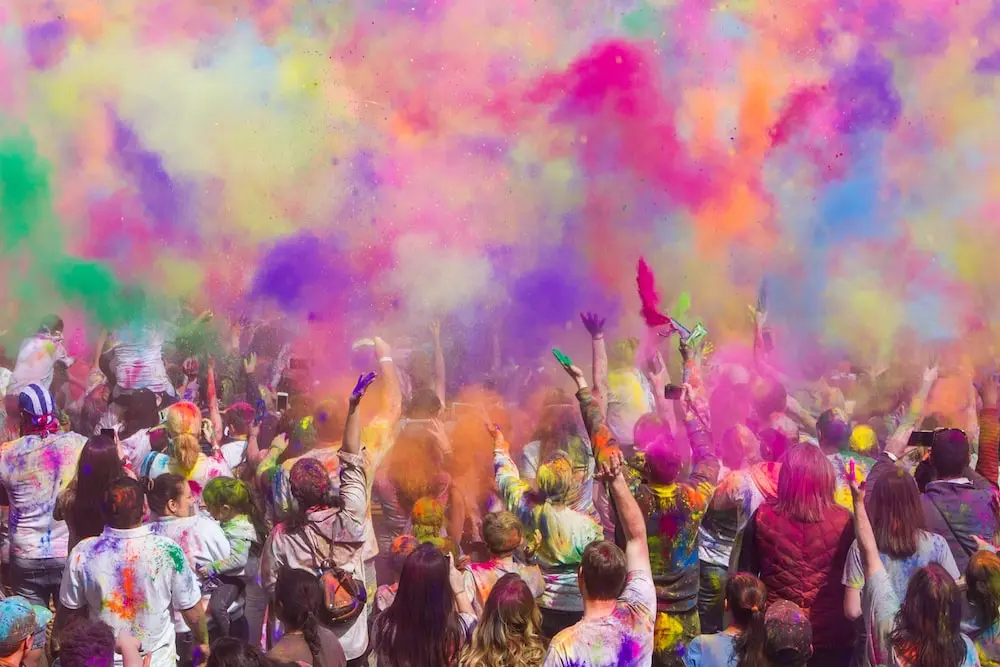A boisterous, colourful celebration of the victory of good over evil, Holi is a festival of tradition and excitement. And if you are looking for places to celebrate energetic and traditional Holi in India, we have sorted out the right list for you. Choose the ideal location for your Holi celebration in India, and discover the unparalleled beauty and experiences there. The colours, fun, songs and dance are sure to give you some priceless Holi festival memories.
Mathura, Barsana & Vrindavan
The Lathmar Holi of Barsana, which often occurs a week before the main celebration, is one of the most fascinating festivals you will ever experience. You can participate in both the Lathmar Holi and the sweet Ladoo Holi at the Shriji Temple in Barsana, here laddoos are distributed among the devotees in and around the temple.
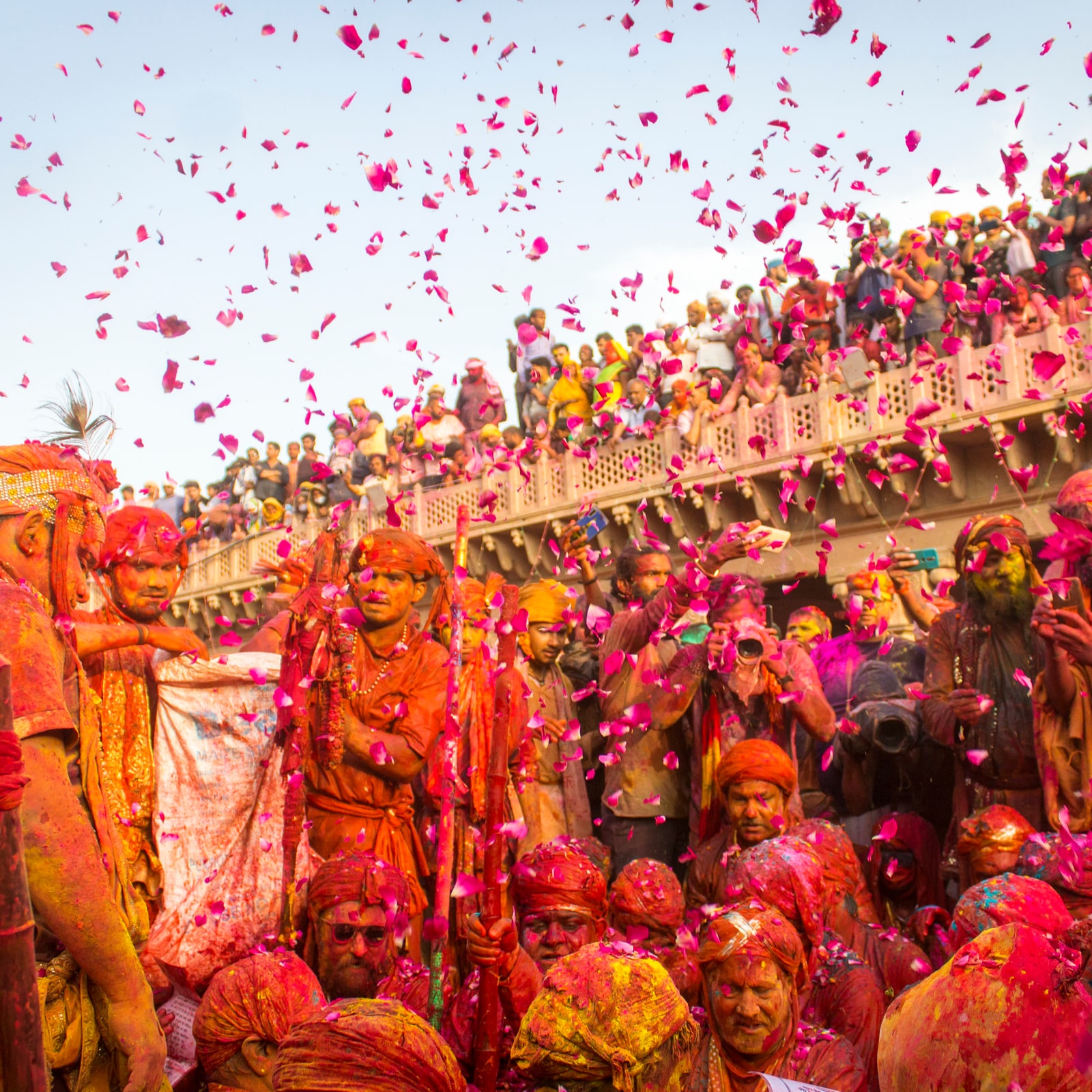
The Holi festival in Vrindavan begins on Vasant Panchami with a traditional puja honouring Lord Krishna. ‘Matki Phod,’ a historical tradition in which an earthen pot is filled with butter and hung high by a rope, is also celebrated here. A group of men form pyramids, climbing on each other’s shoulders in an attempt to break the pot, while women distract the men by throwing colours.
The Banke-Bihari Temple in Vrindavan is one such place to enjoy the festivities, as it hosts a week-long Holi celebration here. Vrindavan is the place where Krishna grew up and is another hot spot when it comes to observing Holi. From the more sophisticated play at the ISKCON temple with dry colours and flowers to the more boisterous kind on the streets, there is something for people from all walks of life.
Shantiniketan, West Bengal
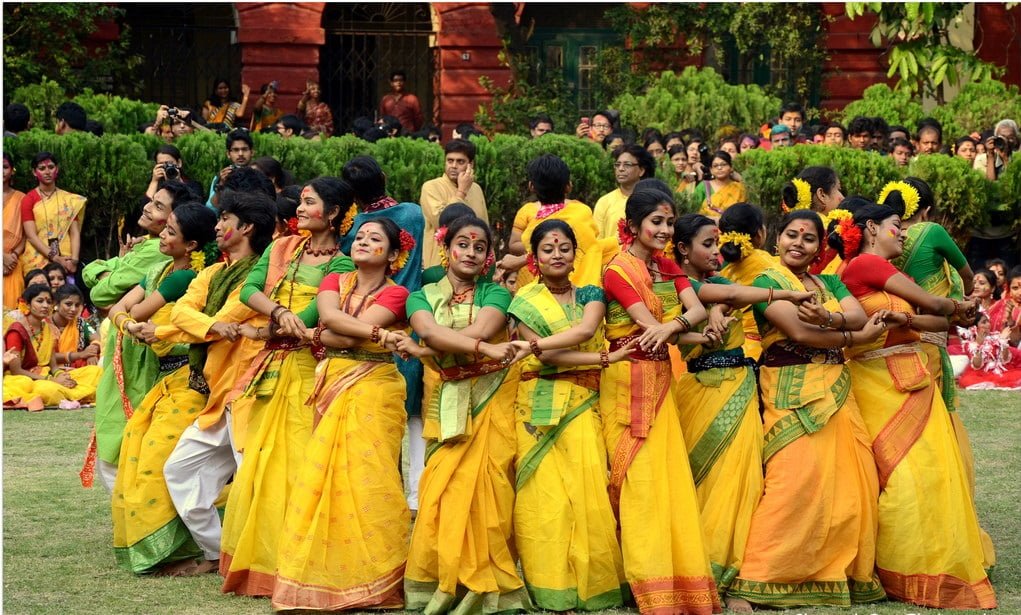
Known as ‘Basanta Utsav ‘, the festivities at Shantiniketan are more musical and lyrical. This festival was started by the famous Bengali poet Rabindranath Tagore, who was so inspired by the colors of Holi that he decided to celebrate it by showcasing Bengali culture.
The festival, which is a an important part of Bengali culture, highlights the diversity of the country. One of the best times to visit Shantiniketan is during Holi, when one can truly grasp the culture of this place, and its many facets. Many foreigners visit here during Basanta Utsav, and there is a heady feeling that one gets amidst all the singing, dancing, and colours.
Hampi, Karnataka
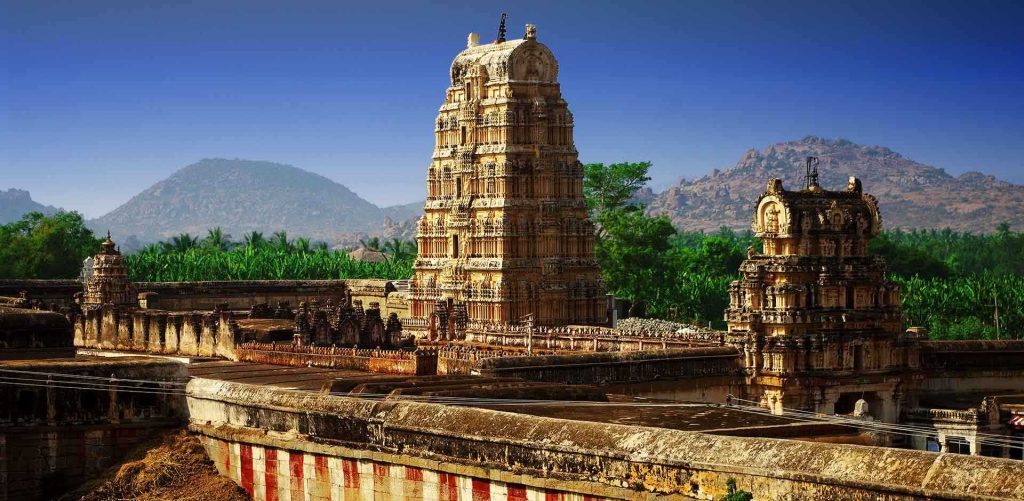
The historic city of Hampi is situated amid the ruins of the Vijayanagara Empire. This small historic city, surrounded by mountainous terrain and age-old temples, is an ideal location for those seeking a beautiful but simple Holi.
For those who want a smaller colour fight with more opportunities to interact with the locals, Hampi is a great place to witness the festivities. During Holi, the people in Hampi are very welcoming and encourage travellers to join in the festival fun.
Udaipur, Rajasthan
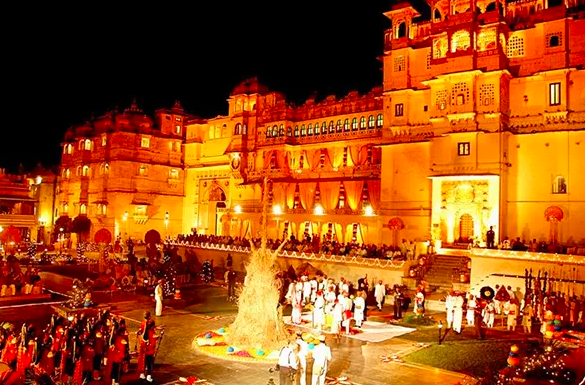
With the regal touch of Udaipur, you can take part in Mewar Holika Dahan at the City Palace with the formal royal family. There is a spectacular two day celebration of Holi festival in the palace with the descendants of the royal family.
Holika Dahan in Udaipur is followed by a large and vibrant rally, accompanied by royal family members, led by magnificent camels, elephants and horses. This royal procession starts from Shambhu Niwas Palace and moves up to their Manek Chowk royal abode. Finally, at the royal palace, a cocktail and dinner are then served and the day ends with magnificent fireworks. On the second day, locals and tourists rejoice holi throughout the city
Delhi
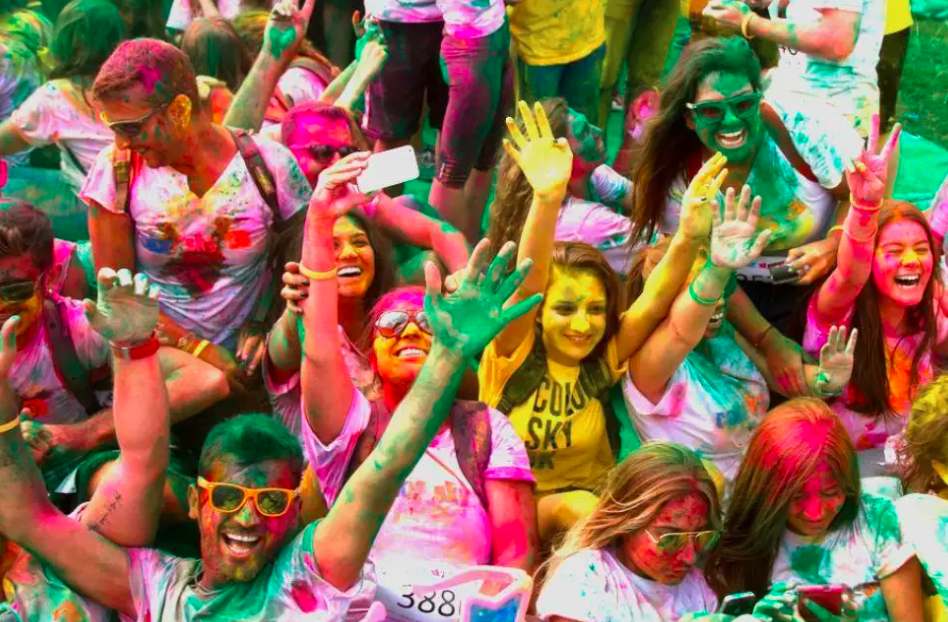
The cultural beauty of Delhi has been abundant throughout India’s history. Holi is celebrated throughout India’s capital city and in a number of other areas with pichkaris as well as other live activities and performances.
Delhi is really famous for big Holi bashes, you can indulge in holi celebrations, rain dance, live Bhangra performance, camel & baggi ride, and a variety of authentic Indian dishes like Gujiya, and Pan to tingle your taste buds.
Manipur
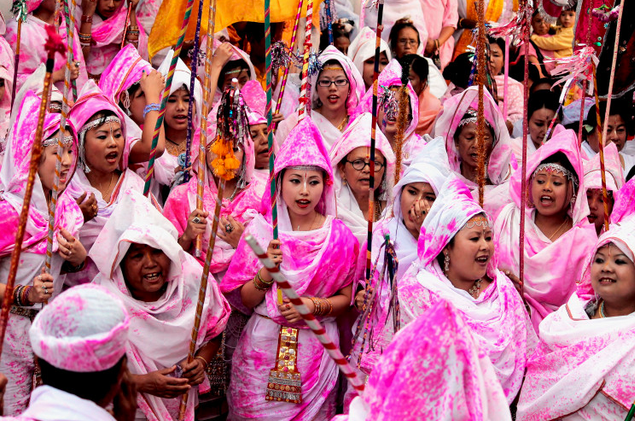
One of the most important events in Manipur is the Yaoshang festival. People from many communities assemble to participate in the festivities. The festival, which lasts five days and is observed on the full moon day of the Lamta month (February–March), is typically observed concurrently with holi. But, unlike Holi, the festivities involve much more than just colour. Singing, dancing, and many more traditional acts are used to commemorate the holiday. Regardless of their gender or age, both the young and the old enjoy the festivities. This event celebrates love among all ages, including children, adults, and those in between.
Hope this post helped you in deciding your destination for Holi celebrations, for more such tips, do follow us here!

